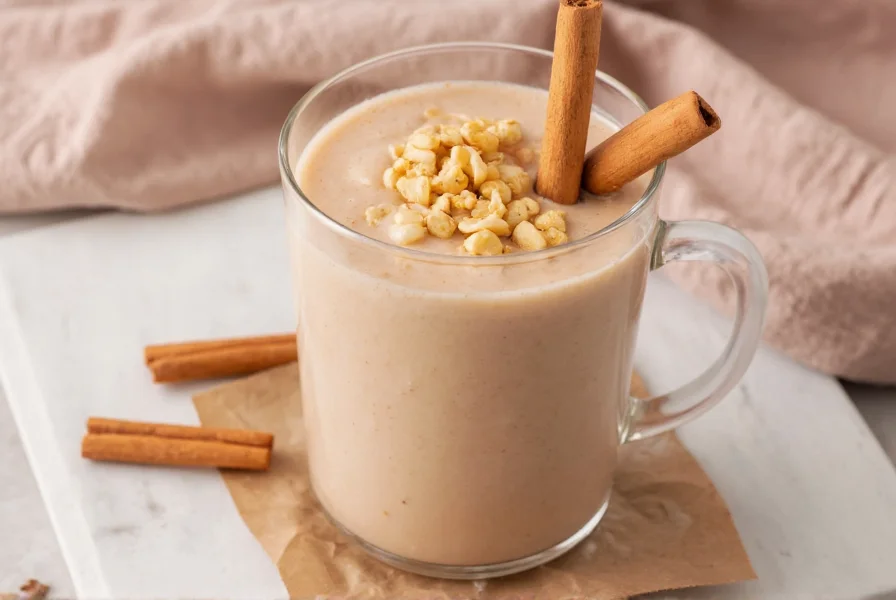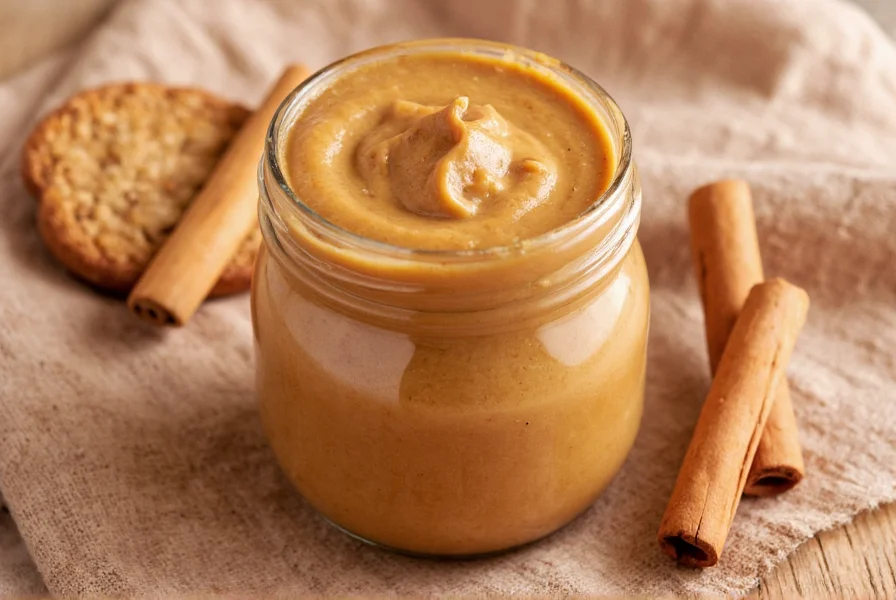For decades, food enthusiasts have enjoyed the dynamic pairing of peanut butter and cinnamon. This classic combination leverages the natural chemistry between warm spices and nutty bases, creating a flavor profile that satisfies both sweet and savory cravings. Unlike trendy food fads, this pairing has stood the test of time due to its simplicity, accessibility, and versatility across various dietary preferences.
The Science Behind the Flavor Pairing
Cinnamon contains cinnamaldehyde, which provides its distinctive warm, sweet aroma. When combined with peanut butter's natural oils and proteins, these compounds interact to create new flavor dimensions. The spice enhances the nuttiness while reducing any potential bitterness in natural peanut butter varieties. Food scientists note that the fat content in peanut butter helps carry cinnamon's volatile compounds, making the flavor experience more pronounced and longer-lasting on the palate.

Nutritional Profile of Peanut Butter and Cinnamon
Both ingredients bring nutritional benefits to the table. Peanut butter provides protein, healthy fats, and essential vitamins like niacin and vitamin E. Cinnamon contributes antioxidants and may help moderate blood sugar responses when paired with carbohydrates—a particularly beneficial effect when enjoying this combination with toast or fruit.
| Ingredient | Key Nutrients | Per 2 Tbsp Serving |
|---|---|---|
| Natural Peanut Butter | Protein, Monounsaturated fats, Magnesium, Vitamin E | 190 calories, 8g protein, 16g fat |
| Ground Cinnamon | Antioxidants, Manganese, Fiber | 12 calories, 4g fiber, 68% DV manganese |
When combined, these ingredients create a nutrient-dense pairing that can enhance various meals. The protein and fat from peanut butter help slow digestion of carbohydrates, while cinnamon's compounds may support healthy metabolic responses. This makes the combination particularly valuable for sustained energy throughout the morning.
Top 5 Ways to Enjoy Peanut Butter and Cinnamon
1. Classic Cinnamon Peanut Butter Toast
The simplest preparation requires quality whole-grain bread toasted to your preference. Spread 1-2 tablespoons of natural peanut butter evenly across the surface while still warm, then sprinkle generously with ground cinnamon. For enhanced flavor complexity, add a light drizzle of honey or a few banana slices. This preparation works equally well with regular peanut butter or powdered varieties reconstituted with water.
2. Peanut Butter Cinnamon Smoothie
Combine one frozen banana, one tablespoon peanut butter, half a teaspoon cinnamon, one cup unsweetened almond milk, and a handful of spinach in a blender. The cinnamon complements the peanut butter while helping mask any vegetal notes from the spinach. This combination creates a nutrient-dense breakfast that provides sustained energy without sugar crashes.

3. Cinnamon Peanut Butter Energy Bites
Mix 1 cup rolled oats, 1/2 cup peanut butter, 1/4 cup honey, 2 tablespoons ground flaxseed, 1 tablespoon cinnamon, and a pinch of sea salt. Roll into 1-inch balls and refrigerate for at least 30 minutes. These no-bake snacks provide balanced macronutrients and make excellent pre-workout fuel or afternoon pick-me-ups. The cinnamon enhances the overall flavor while potentially supporting healthy blood sugar responses.
4. Overnight Oats with Peanut Butter Swirl
Combine 1/2 cup rolled oats, 1/2 cup unsweetened almond milk, 1/4 cup plain Greek yogurt, 1 tablespoon chia seeds, and 1/2 teaspoon cinnamon in a jar. Refrigerate overnight. Before serving, add 1 tablespoon peanut butter and swirl through the mixture. This preparation method allows the cinnamon to fully infuse the oats while the peanut butter adds protein and healthy fats for a satisfying breakfast.
5. Apple Slices with Cinnamon Peanut Butter Dip
Mix 2 tablespoons peanut butter with 1/4 teaspoon cinnamon and a splash of milk until smooth. Serve with crisp apple slices for a balanced snack combining fiber, protein, and healthy fats. The acidity of the apple complements the richness of the peanut butter while the cinnamon ties both components together with its warm notes.
Storage and Usage Tips
When preparing cinnamon peanut butter mixtures in advance, store them in airtight containers in the refrigerator for up to one week. The natural oils in peanut butter may separate over time—simply stir before use. For longer storage, freeze individual portions of energy bites or pre-portioned smoothie packs for quick preparation. Always use freshly ground cinnamon when possible, as pre-ground varieties lose potency after 6-12 months.
Common Questions About Peanut Butter and Cinnamon
Does cinnamon improve the nutritional value of peanut butter?
Cinnamon adds valuable antioxidants and may help moderate blood sugar responses when consumed with carbohydrate-containing foods. When paired with peanut butter, it doesn't significantly change the macronutrient profile but enhances the overall nutritional quality through its phytochemical content. The combination creates a more balanced snack that provides sustained energy without dramatic blood sugar fluctuations.
What's the best ratio of peanut butter to cinnamon?
The ideal ratio depends on personal preference and application. For toast or fruit dipping, start with 1-2 tablespoons peanut butter and 1/4-1/2 teaspoon cinnamon. In smoothies or baked goods, use 1/2 to 1 teaspoon cinnamon per 2 tablespoons peanut butter. Always begin with less cinnamon—you can add more to taste but cannot remove excess once incorporated. Natural peanut butter varieties typically require slightly more cinnamon to achieve balanced flavor.
Can I make cinnamon peanut butter at home?
Yes, making cinnamon peanut butter at home is simple. Blend 1 cup natural peanut butter with 1-2 teaspoons ground cinnamon until thoroughly combined. For enhanced flavor, add a pinch of sea salt and 1 teaspoon honey or maple syrup. Store in an airtight container in the refrigerator for up to two weeks. Homemade versions avoid the added sugars and preservatives found in some commercial flavored peanut butters while allowing you to control ingredient quality.
Does the type of peanut butter affect how cinnamon pairs with it?
Yes, the peanut butter variety significantly impacts the flavor balance. Natural peanut butter with just peanuts and salt requires slightly more cinnamon to achieve balanced flavor. Conventional peanut butter with added sugar needs less cinnamon as the sweetness competes with the spice. Powdered peanut butter reconstituted with water creates a lighter base that works well with more pronounced cinnamon flavor. Always adjust cinnamon quantities based on your specific peanut butter variety and personal taste preferences.
Are there any safety considerations when combining peanut butter and cinnamon?
The primary safety consideration involves proper portioning, as excessive cinnamon consumption can cause issues for some individuals. Stick to culinary amounts (typically 1-2 teaspoons per serving) to avoid potential irritation from coumarin, a compound in cassia cinnamon. Those with peanut allergies should obviously avoid this combination. When serving to children, ensure peanut butter is spread thinly to prevent choking hazards, and introduce cinnamon gradually as some children may be sensitive to strong spices.











 浙公网安备
33010002000092号
浙公网安备
33010002000092号 浙B2-20120091-4
浙B2-20120091-4